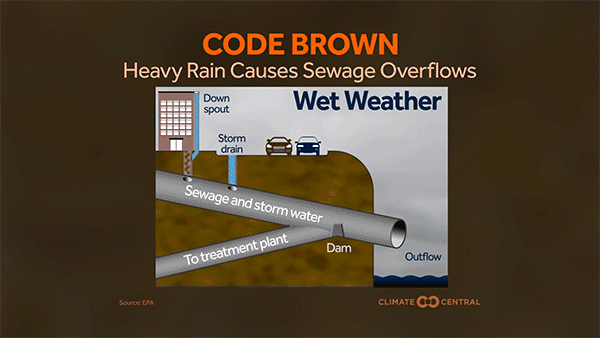Combined sewage overflow is a messy problem that comes with heavy rain in both urban and suburban areas. Aging infrastructure in many localities is not equipped to handle the massive volume of water from heavy precipitation runoff, and with the number of downpours increasing in a warming world, the problem threatens to get worse.
Combined sewage systems are most common in older U.S. cities, including parts of Philadelphia and New York City. These systems route both stormwater runoff and sewage toward water treatment plants. But when rainfall and its runoff are too much for the system to handle, the excess wastewater is discharged into nearby bodies of water to avoid backing up into homes and businesses.
Although there is no national database of sewage overflows, a nationwide search for heavy rain-related overflows since January 2015 documented 70 events. Of these, nearly 30 percent were overflows of more than 1 million gallons of mixed runoff and sewage – enough to fill nearly 2 Olympic-sized swimming pools. As a recent example, the Ellicott City flood earlier this year released 25 million gallons. But the largest overflow identified came from Milwaukee in April 2015, where 681 million gallons were released. See our full report for a comprehensive analysis.
In some instances, overflow is dumped into locations which are also sources of drinking water. For those using the water, the increase in contaminants can result in stomach and intestinal illnesses if the treatment process is not thorough enough.
Our analysis of more than 3,000 rain gauges across the U.S. indicates that all but two of the Lower 48 states have seen an increase in the number of heavy downpours happening each year, on average, compared to the 1950s. At the local level, even in cities that have started to upgrade their systems, the problem will not be eliminated altogether. In a warming world with more heavy precipitation, these overflows will still need to be managed.
